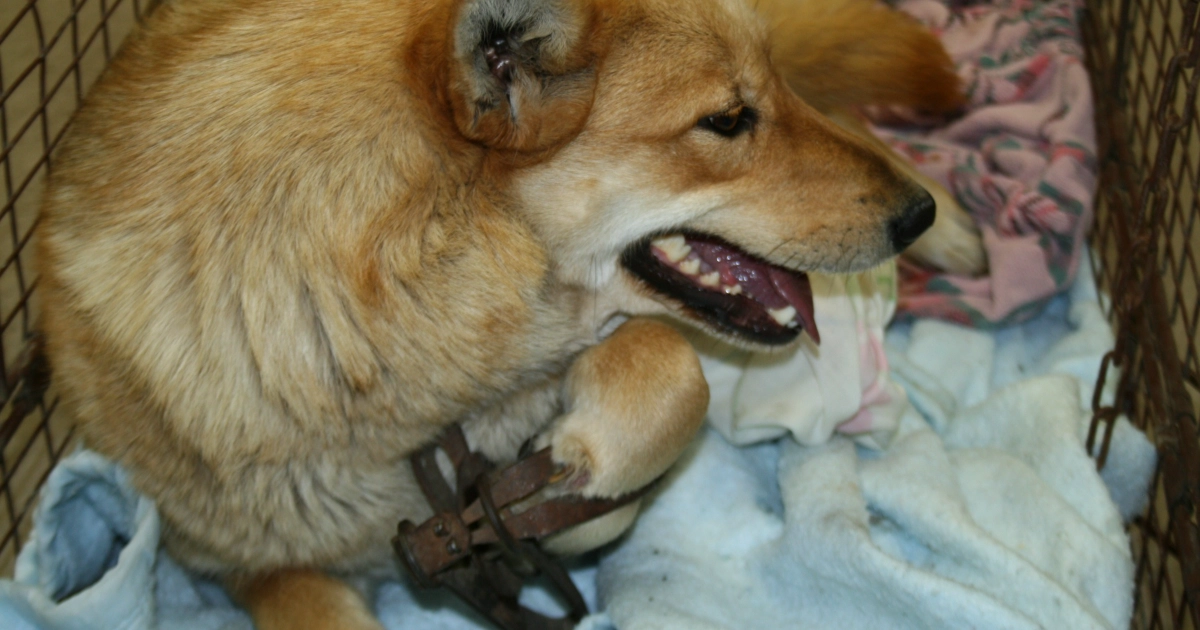
Photo provided by Alberta Animal Rescue Crew Society
The Fur-Bearers is encouraging residents to contact their municipalities to request trapping prohibitions following three incidents across the country in which companion animals were injured or killed by common traps.
Media reports show that since October, dogs were killed in Parkland County, Alberta, Charlottetown, PEI, and a cat injured and requiring amputations in Winnipeg, Manitoba. Such incidents aren’t unusual but can be hard to measure as reporting of domestic animals being caught in traps is not mandatory. The Fur-Bearers rely on traditional and social media posts to track incidents and we are in the process of gathering more thorough information about the scale of this problem across Canada.
Not A New Problem
A briefing note in British Columbia uncovered through a Freedom of Information request shows the harrowing reality – one that governments are aware of. The 2013 note, written to then-Minister of Forests, Lands, Natural Resources Steve Thompson, indicated that “since 2003 there have been over 85 reports of pets being caught in traps (approximately 8 pets per year).”
The briefing note also conveys that conservation officers estimate the number to be significantly higher.
The Fur-Bearers has spoken to many families who have lost their companions or watched them slowly die in the grips of traps; in nearly every case, it is reported that there was no knowledge of trapping in the area, and in some cases, traps were less than a meter from a property line, trail, or road.
In addition to the risks to pets and the inherently inhumane impact on wildlife, people can be caught and injured in traps as well, as noted in this 2020 incident.
Take Action
Trapping is mandated at the provincial level, though provinces have shown little interest in putting the majority of recreational users ahead of trappers; warning signs, setbacks from publicly accessible roads and trails, and ID tags for investigative purposes are not required anywhere. However, municipalities (local governments) have taken positive action to prohibit or limit the use of traps within their borders. This gives by-law officers additional tools for enforcement and creates a new layer of education for the public. The City of Winnipeg is a recent example where a municipality has restricted the use of traps in 2022.
The Fur-Bearers are encouraging all residents to contact their municipal representatives and request trap prohibitions be put in place for the safety of pets, people, and the environment.
- Stick to the facts. Everything on The Fur-Bearers’ website is sourced and provides citations, and is therefore reliable information. Speculation or hyperbole can erode the message and trust.
- Be respectful. Offensive language or threats are not appropriate and can erode the message, making it more difficult for effective advocacy and change.
- You may need to start fresh. A lot of municipal employees or elected officials may not know that trapping takes place, or may only have heard about it through the trapping and fur industry. This may require the patient exercise of showing facts that counter opinion.
- Trapping incidents take place everywhere. There’s often a notion that trapping only takes place in the far reaches of Canadian wilderness. However, trapping takes place anywhere – and traps are accessible to anyone, even in and around major cities like Toronto and Vancouver.
- There remain no requirements to report companion animals, to post signage or warnings of active trapping in the area, or setbacks from publicly accessible trails, roads and paths.
- Consider including a link to The Fur-Bearers’ trapping incident page, on which we attempt to track as many incidents of companion animals being trapped as possible.
Click here to view the list of trapping incidents across Canada reported in the media. Have you heard of a recent trapping incident? Let us know by tagging us on social media or sending a link and information to info@TheFurBearers.com.
